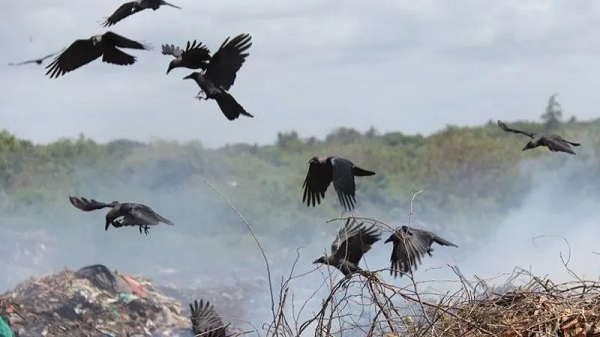
NAIROBI, Aug 2 (NNN-AGENCIES) — “Invasive alien birds” sounds like the strapline to a scary Hollywood blockbuster, but for the people of coastal Kenya, it is not a matter of fiction.
The authorities there are so worried about the nuisance created by Indian house crows that they have begun the process of culling a million of them.
They have not targeted humans, as in the Alfred Hitchcock horror film The Birds, but these ones have for decades caused widespread disruption by preying on wildlife, raiding tourist areas, and attacking poultry farms.
Poison is now being used in the towns of Watamu and Malindi to kill the first tranche of the ruthless sub-species.
This ambitious poisoning campaign is aimed at halting the crows’ advance towards the capital, Nairobi.
The birds, known on the coast as “kunguru” or “kurabu,” originated from India and other parts of Asia, often spreading elsewhere by travelling on trading ships.
But they are believed to have been intentionally introduced in East Africa around the 1890s in a bid to tackle a mounting waste problem on the Zanzibar archipelago, then a British protectorate. From there, they spread to the mainland and up the coast to Kenya.
They were first recorded in the port of Mombasa in 1947, and since then, their numbers have exploded, thanks to the growing human population and the accompanying mounds of rubbish, which provide an ideal environment for the birds to feed and breed. They also have no natural predators.
The Indian house crows, considered one of the world’s most invasive and destructive birds, have continued their northward journey.
“They prey on the indigenous species—not just birds but also mammals and reptiles—and so their impact on biodiversity is devastating,” Jaap Gijsbertsen, a Dutch bird expert who is visiting Kenya’s Watamu area, said.
Conservationists say that the crows have significantly reduced the number of small indigenous birds in the region, such as weavers and waxbills, by ripping their nests apart while targeting eggs and even chicks.
“When the population of local birds declines, the environment begins to suffer. There will be a possible increase in harmful pests and insects that the birds prey on,” Lennox Kirao, a research scientist with conservation group A Rocha Kenya, said. — NNN-AGENCIES





